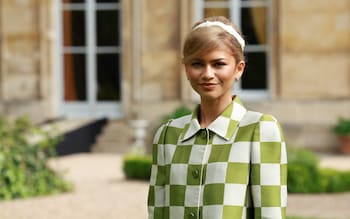A viral TikTok by a Cornell psychology PhD student has rekindled interest in a 2006 psychological study that made correlation between people's personality preference in a partner and what they find attractive.
Mary Ross, who posts on TikTok under the handle @marypatross, posed a simple question in her now-viral video: which of four men would viewers choose to date?
She then unpacked the study's findings, revealing that people tend to find faces attractive if they possess physical traits associated with their preferred personality traits in romantic partners.
The original study used computer graphics to create composite faces based on participants' personality preferences. A hundred participants rated the attractiveness of computer generated faces of the opposite sex, and filled out a questionnaire on desired personality traits.
What they found was interesting—as faces were overwhelmingly deemed more attractive by individuals when they were perceived to possess desired traits, such as assertiveness, easy-going nature, scatter-brainedness, and warmth.
"I'm very happy this research is being shared in such an accessible way," one of the study's authors, Anthony Little, PhD, told Newsweek, pointing out that when the study was first published in mid 2000s, such widespread sharing was not possible.
Little still works in the field, collecting data for future research projects around faces and the information we extract from them on his site alittlelab, where people can take part.
After showing the pictures in her video, that now has over 8 million views, Ross explained the theory behind the study—and noted that her pick was definitely man D.
Ross' TikTok video only shared the male faces from the study, but both male and female faces were tested as part of the research.
Results
Male images
Face A represents a composite of faces most preferred by women who did not want an easy-going partner, whereas B is a composite of faces picked by women who preferred an easy-going partner.
Face C is a composite of faces preferred by women who wanted a more passive partner, while face D represents faces was preferred by people desiring an assertive partner.
Female images
Face A represents a composite of faces preferred by men who did not want an easy-going partner, while face B is a composite of faces picked by men who prefer an easy-going partner.
Face C is a composite of faces preferred by men who wanted a more passive partner, and face D is preferred by men who want an assertive partner.
"One thing I like about this research is that it suggests not everyone agrees on the most attractive person," he said, reflecting on how the study proved that attraction is subjective. "The work challenged a prevailing idea in stereotype research that 'what is beautiful is good', with our results instead suggesting that this may be reversed to 'what is good is beautiful.'"
This subjectivity was clear in more than 15,000 comments on the viral TikTok video, where people enjoyed sharing their favorite picture from A-D.
"Well C looks like Hayden Christensen the most so..." said one viewer. While another said: "I thought A looked evil."
One TikToker wrote: "D, I like that he looks confident."
"Any of them, I'm desperate," joked another viewer.
"There is a lot of variability in who we find attractive and there is no one 'ideal beauty standard,'" explained Little. "People like different people, and there is no right or wrong choice in who we find attractive. I think that is a positive message to share more widely."
Newsweek reached out to Mary Ross via TikTok for comment.
Disclaimer: The copyright of this article belongs to the original author. Reposting this article is solely for the purpose of information dissemination and does not constitute any investment advice. If there is any infringement, please contact us immediately. We will make corrections or deletions as necessary. Thank you.



